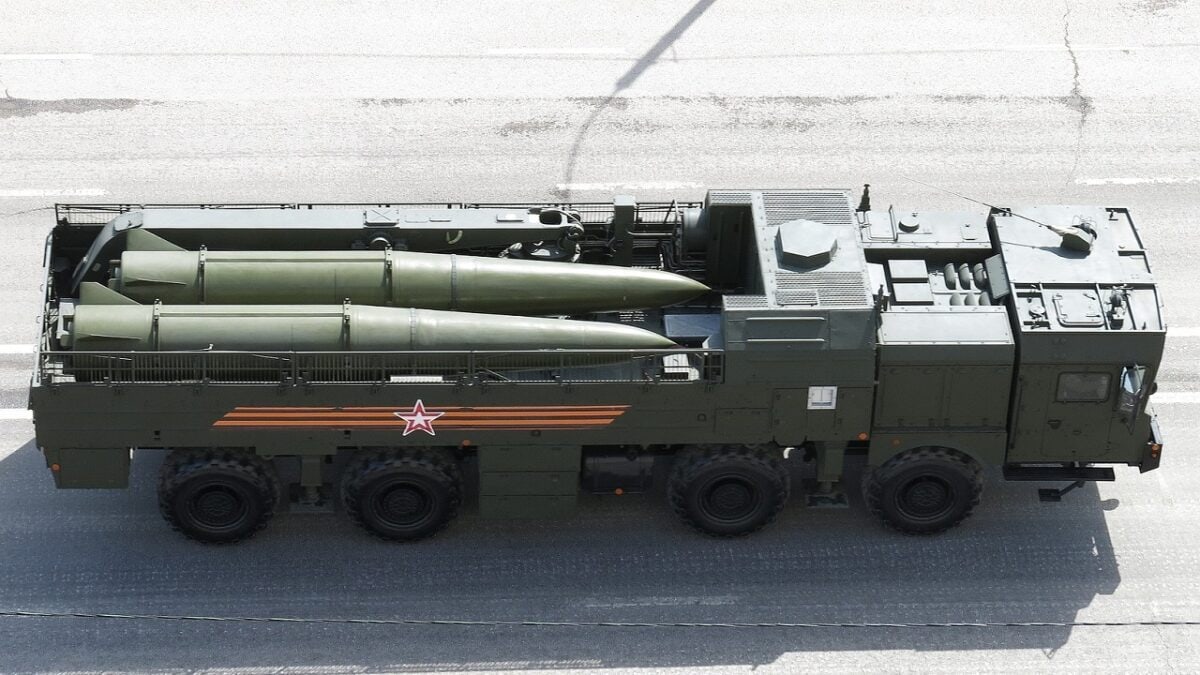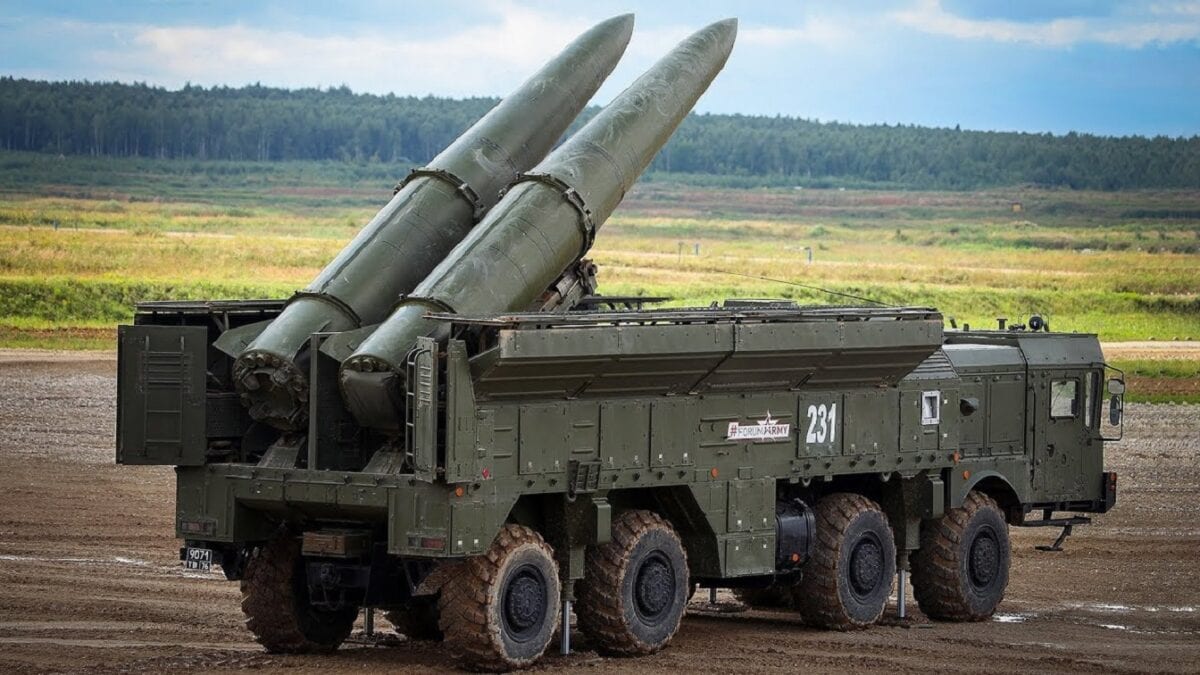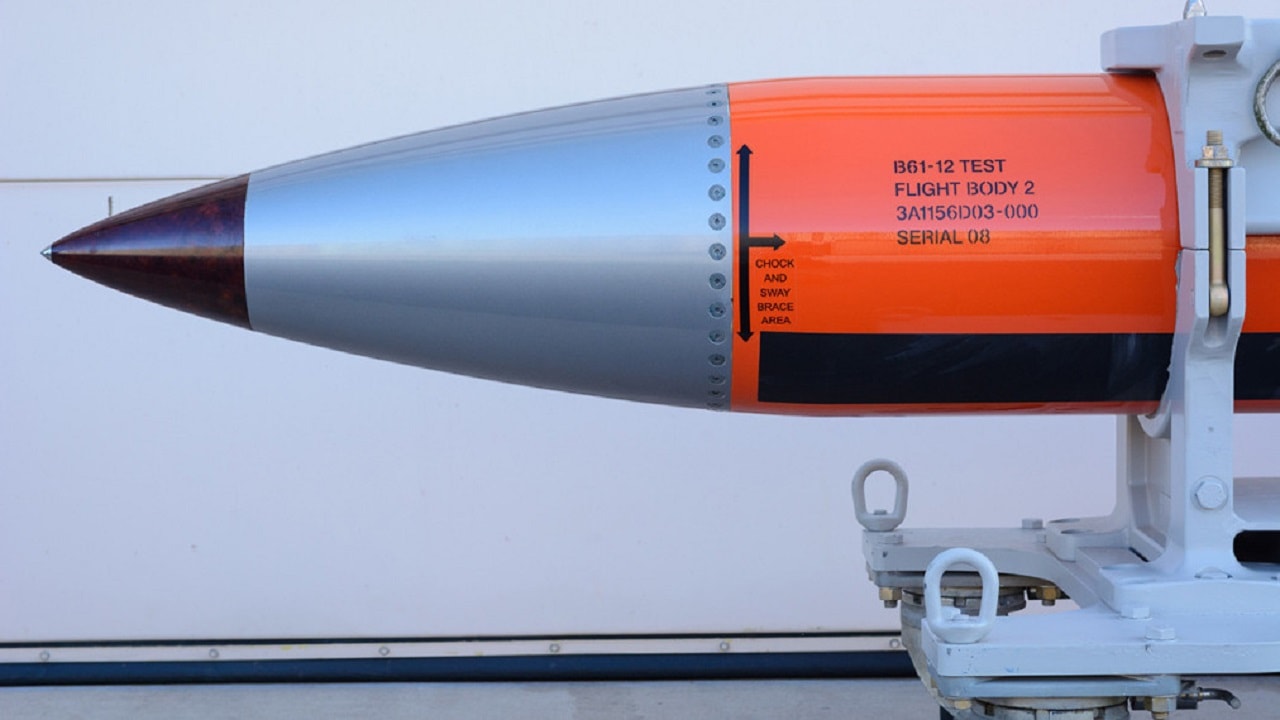As the owner of the world’s largest arsenal of nuclear weapons, both strategic and tactical, the question of Russian use of nuclear weapons is understandably a matter of latent concern in Western capitals. While Russia has not shown a serious indication of an intention to use its tactical nuclear weapons on the battlefields of Ukraine other than some saber rattling in the first weeks of the war, Russia’s tactical nuclear arsenal remains operational and a matter of concern.
What does Russia’s Tactical Nuclear Arsenal Look Like?
For the purpose of this analysis, the term “tactical nuclear weapon” or “non-strategic nuclear weapon” is defined as a nuclear weapon that features a range of fewer than 500 kilometers for ground-based weapons and 600 kilometers for air- and sea-based weapons, although the country which employs them may classify its tactical weapons in a different way entirely. Russia’s tactical nuclear weapons are intended for battlefield use, rather than transcontinental or intercontinental use.
Russia’s tactical nuclear weapon arsenal is split between its Aerospace Forces, Navy, and Ground Forces. According to the Bulletin of the Atomic Scientist’s 2022 Nuclear Notebook, Russia possessed an estimated 1,912 nonstrategic and defensive (including warheads used in air, missile, and coastal defense) nuclear weapons as of March 2022, all of which the report believes are held in central storage.
Russia’s Navy holds the largest share of its tactical nuclear weapons (more than 900 torpedo- and cruise-missile mounted warheads), while Russia’s Aerospace Forces come in second place with around 500 air-launched weapons allocated to it, which would be carried to firing positions by Russian bomber and attack aircraft such as the Tu-22M3, Su-24, Su-34, as well as the Su-31K interceptor.
Finally, Russia’s ground forces are estimated to possess around 90 tactical nuclear weapons, which would be delivered by missiles launched from systems such as the Iskander ballistic missile and 9M729 cruise missile launchers.
Russian Tactical Nuclear Weapon Doctrine and Strategy
With such a sizeable arsenal in hand, Russia’s tactical nuclear doctrine is important to understand.
While the 2018 Nuclear Posture Review and many U.S. policymakers and experts assume that Russia would use its tactical nuclear weapons in a so-called “escalate to deescalate” strategy on a battlefield to achieve a desirable settlement, the evidence that this is a formally defined doctrine of Russia’s Armed Forces is disputable.
Simply put, the most modern iterations of Russia’s public nuclear doctrines have emphasized a high threshold of use for strategic and non-strategic nuclear weapons. While Russian nuclear doctrine has undoubtedly considered the role of strategic and non-strategic weapon use in the escalation ladder in conflict – and some in Russia’s nuclear policy sphere have argued for approaches that sound an awful lot like “escalate-to-deescalate. Nonetheless, strategic and non-strategic nuclear weapons are ultimately viewed as useful deterrents and x-factors in Russia’s arsenal which it can use to help manage escalation in a manner which exceeds just de-escalation.
Would Russia Make Use of Tactical Nuclear Weapons in Ukraine?
Russia’s February 2022 invasion of Ukraine has understandably raised fears that Russia could use its tactical nuclear weapons on the battlefield. Russian threats early in its invasion to use nuclear weapons against Western nations which interfere in Moscow’s invasion of Ukraine caught the attention of Western intelligence and policymaking leaders.
U.S. policymakers have reason to still be cautious about Russia’s nuclear intentions, as highlighted by Washington’s condemnation of Moscow’s June announcement that Russia would transfer nuclear-capable Iskander-M systems to the territory of Belarus.
Given the fact that Russia likely sees its tactical nuclear arsenal as a tool at its disposal for regional or global conflicts with more powerful opponents such as the combined forces of NATO, it is unlikely that Russia would seek to employ its tactical nuclear weapons on the battlefields of Ukraine in any foreseeable operational scenario. If it were to do so, we would likely have visual proof and warning of Russia moving its tactical nuclear arsenal out of storage before a planned strike. To date, no such movement appears to have occurred.

Iskander Transport Loader 9T250

Iskander Missiles. Image Credit: Creative Commons.
Even if Russia appears to be holding back on using its tactical nuclear weapons now, further observation to monitor the movement, or lack thereof, of Russia’s nuclear arsenal would be wise.
Regardless of their use or non-use, Russia’s tactical nuclear weapons are likely here to stay as a source of prestige and perceived security for Moscow.
Wesley Culp is a Research Fellow at the Center for the Study of the Presidency and Congress. He regularly writes on Russian and Eurasian leadership and national security topics and has been published in The Hill as well as in the Diplomatic Courier. He can be found on Twitter @WesleyJCulp.

